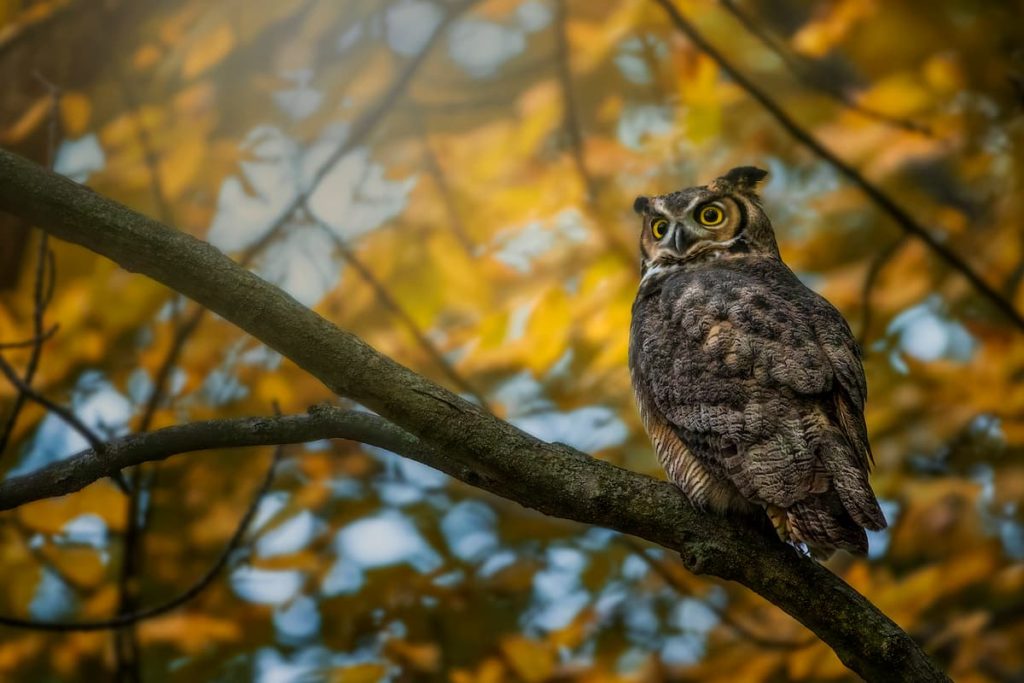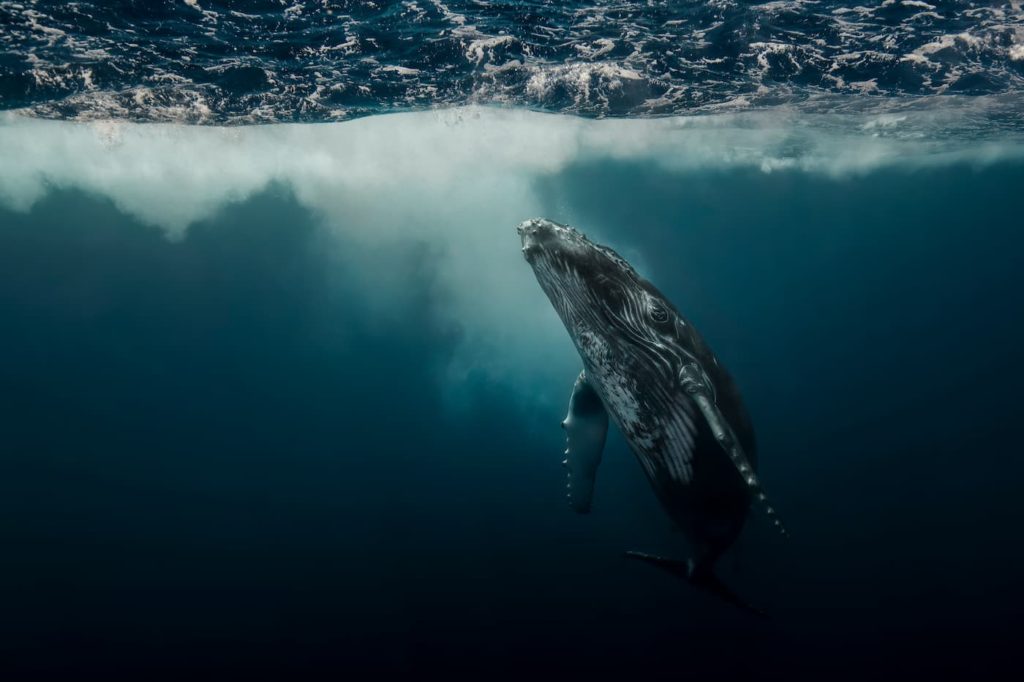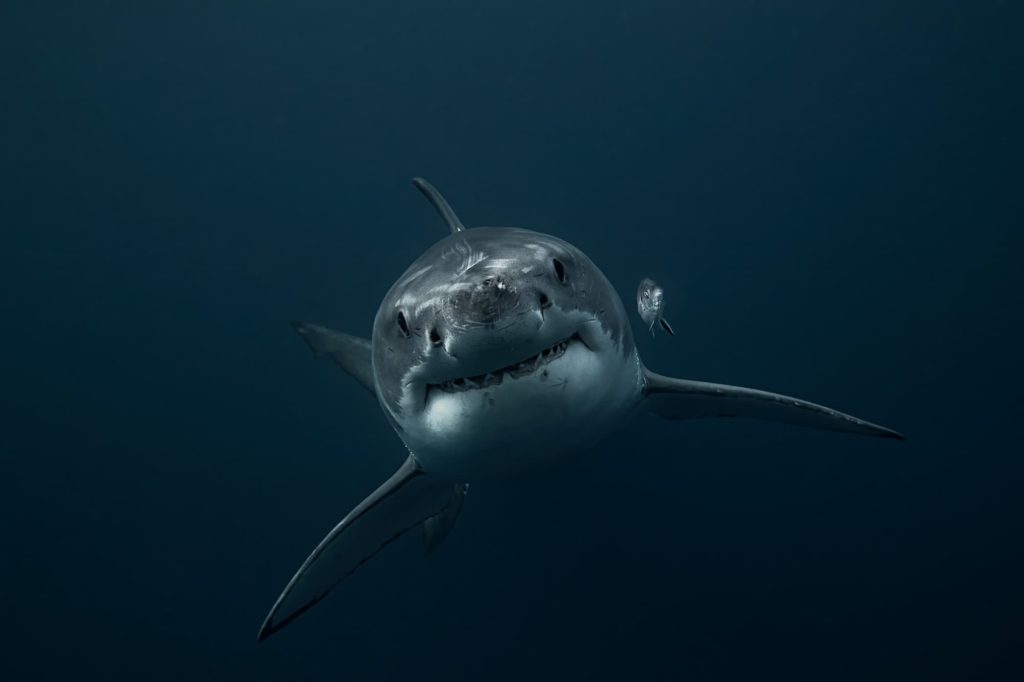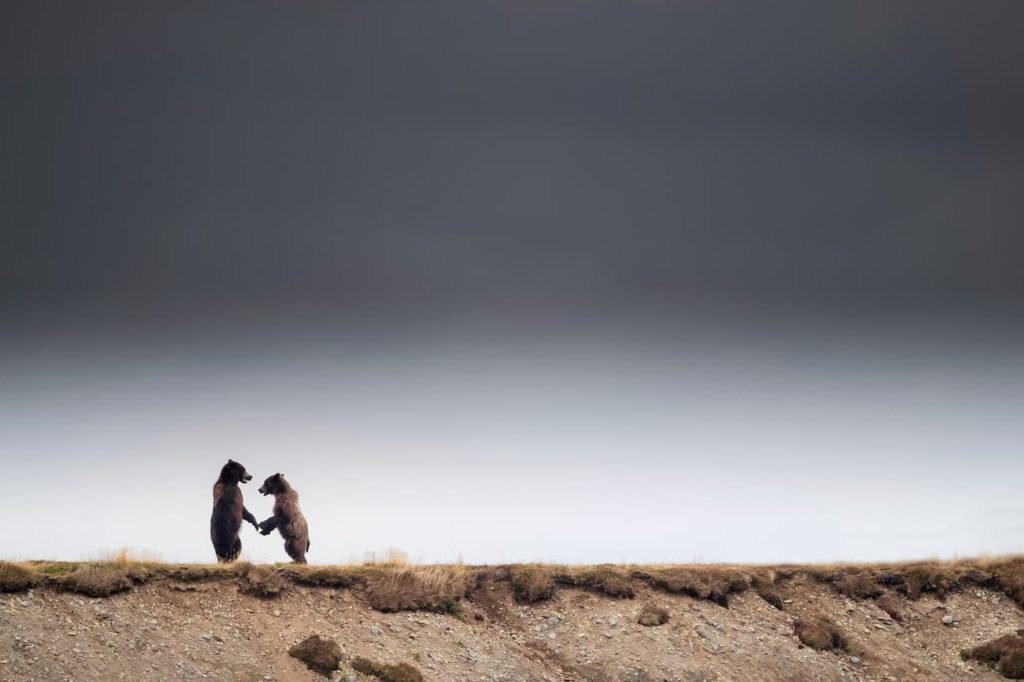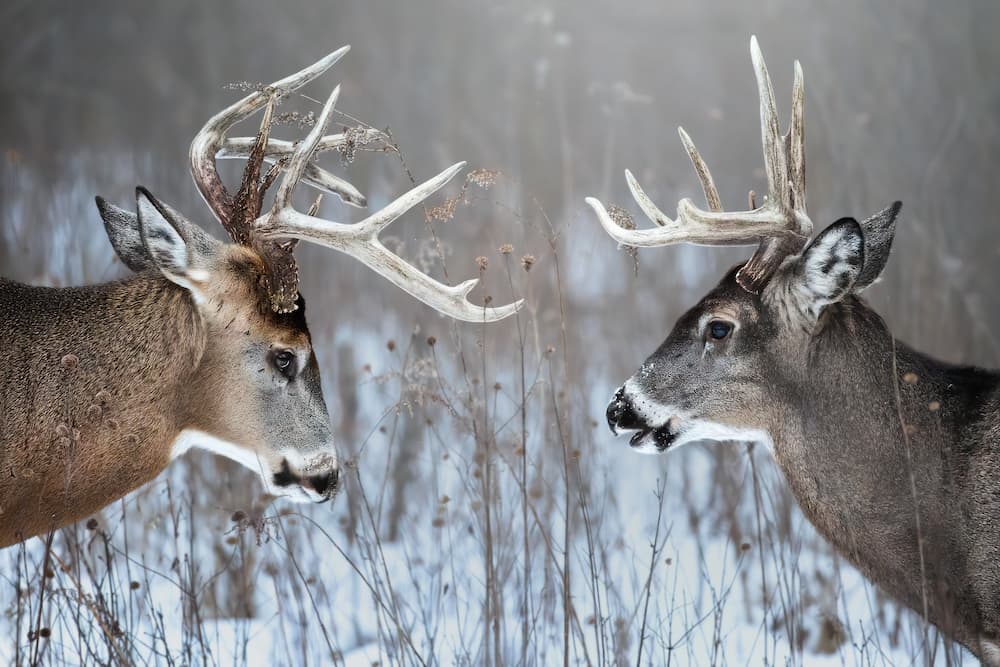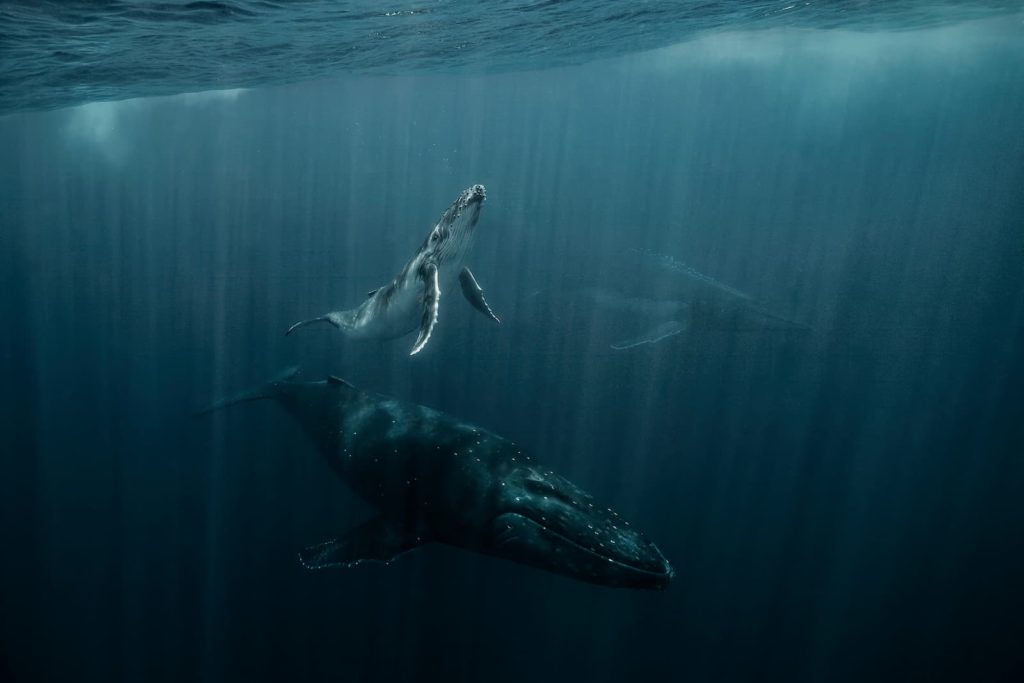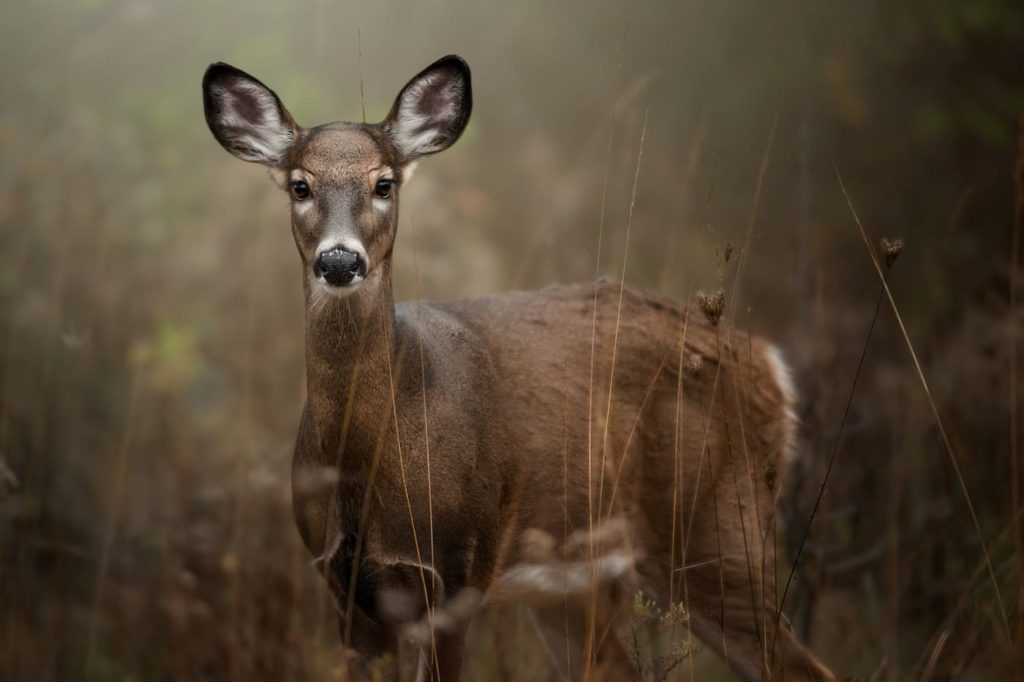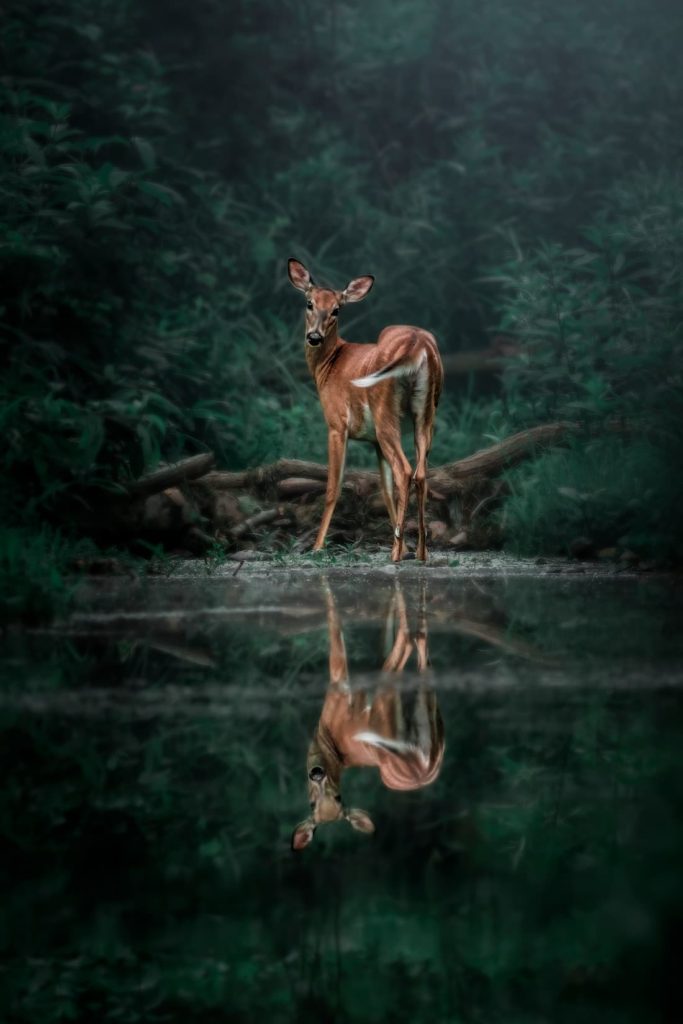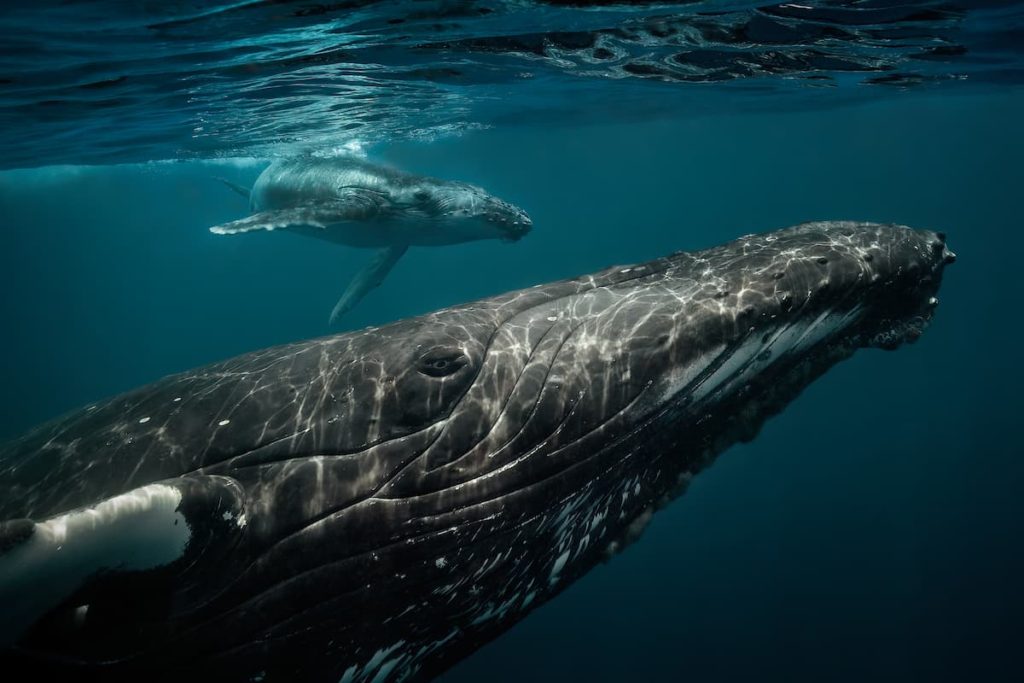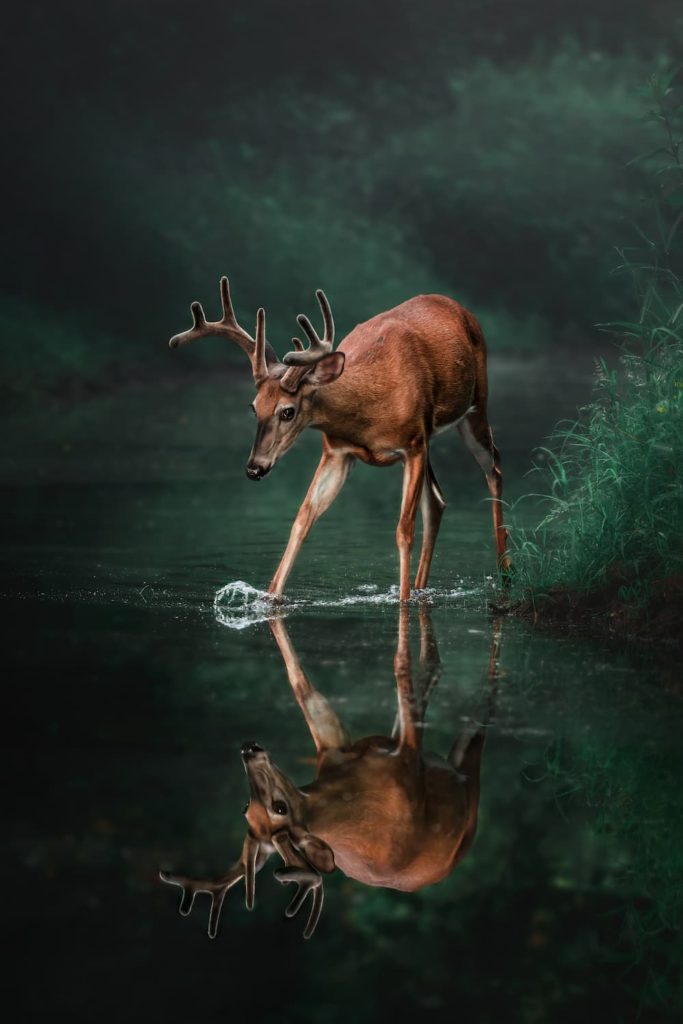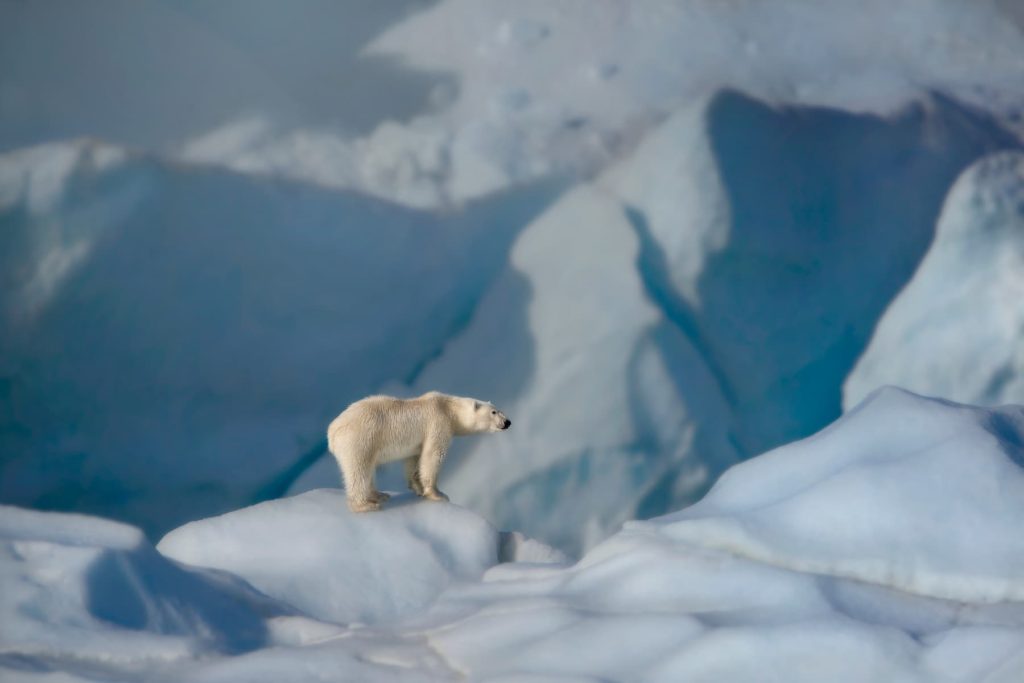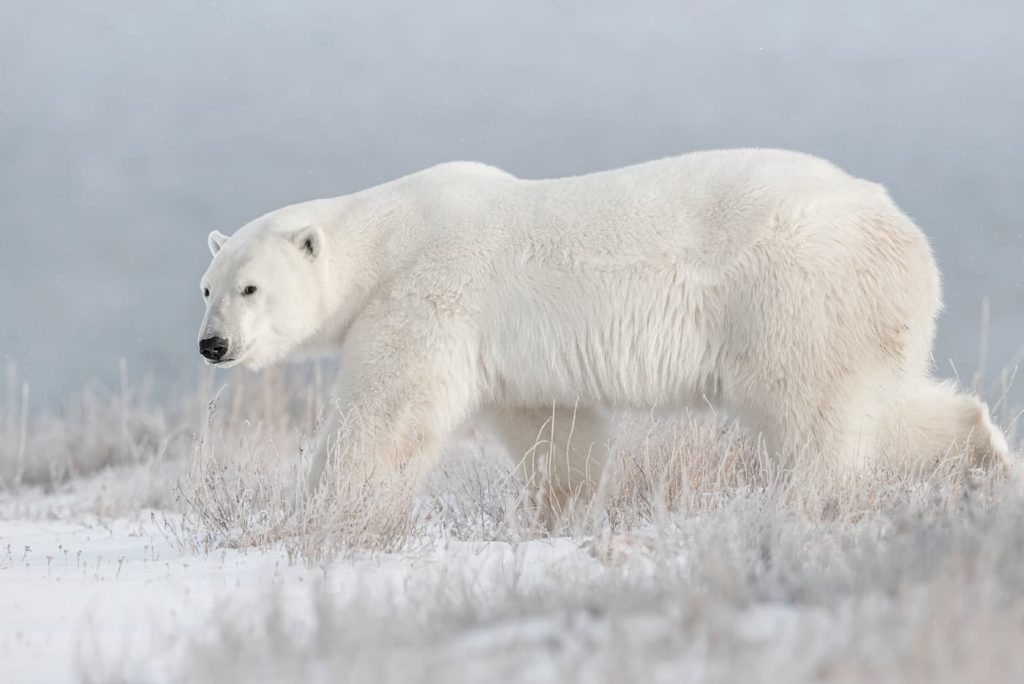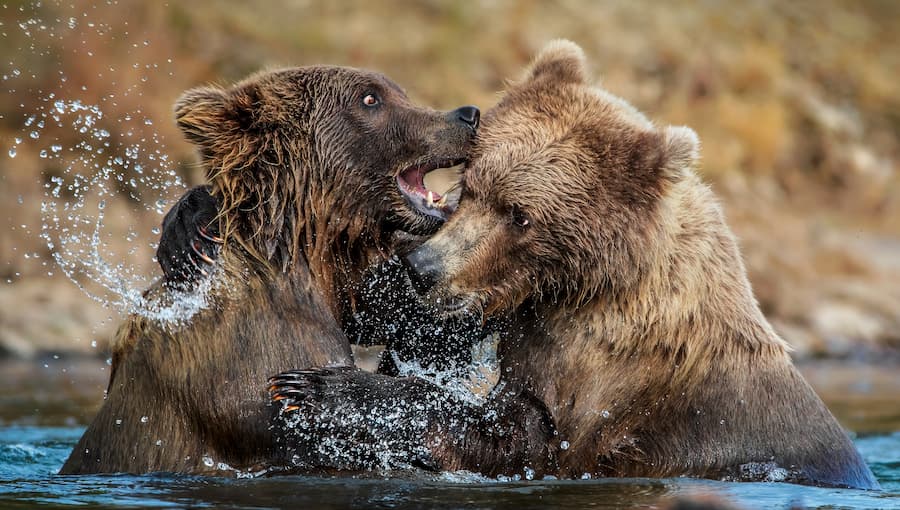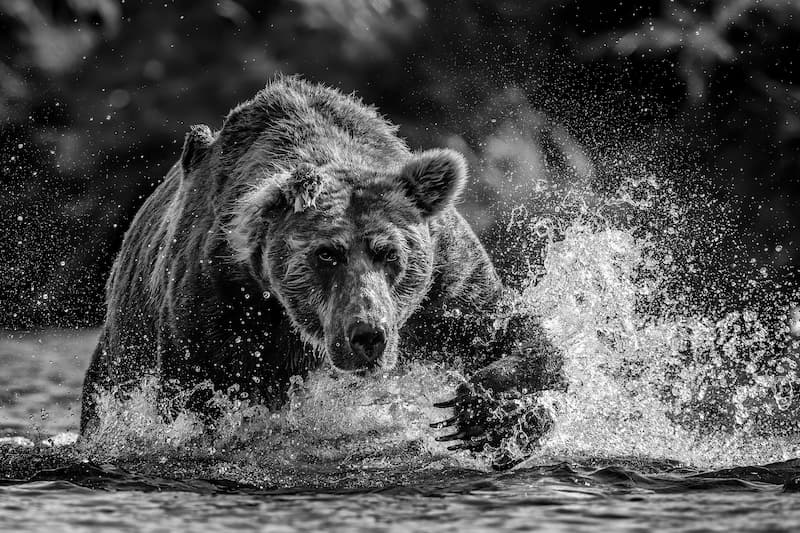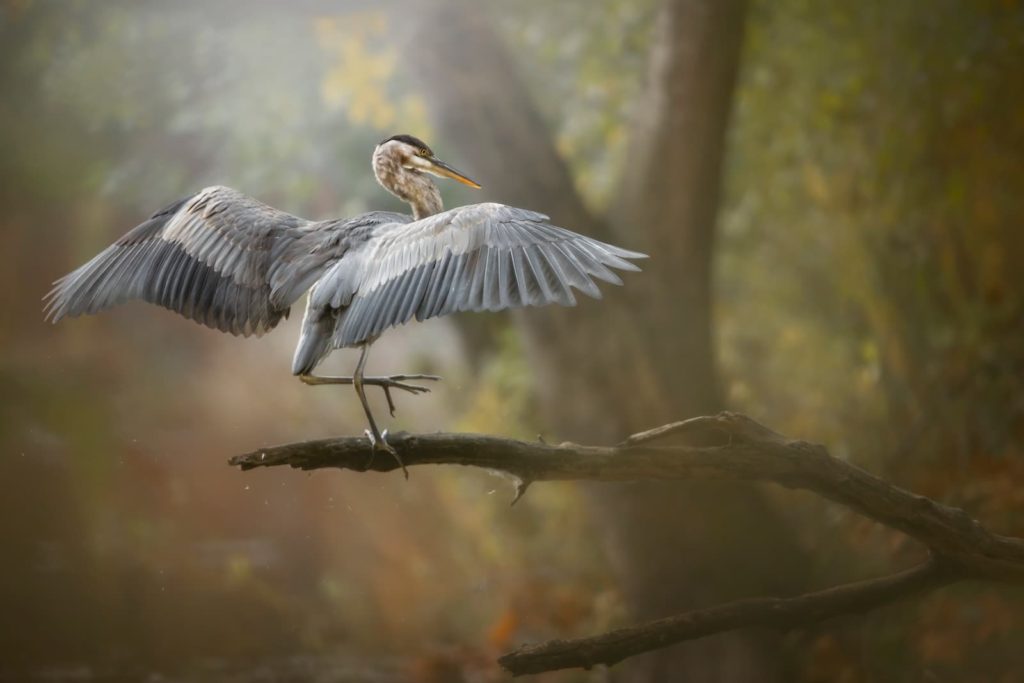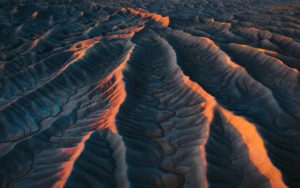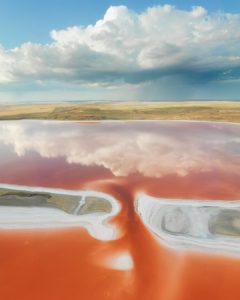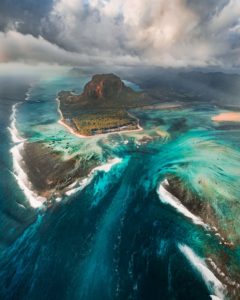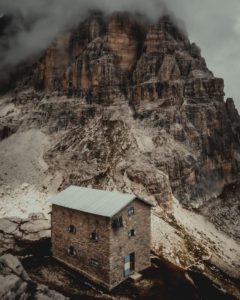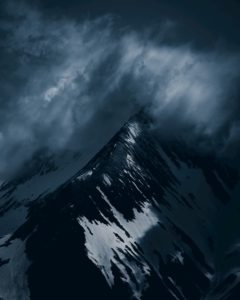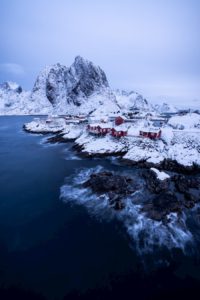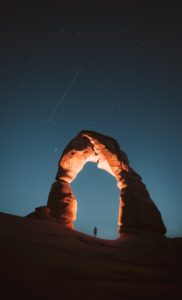
Dave Sandford
@davesandford
Photographer based in Canada
Introducing Dave Sandford
His entire life, Dave held onto the dream of being a wildlife photographer. He developed a love of animals and nature at a very young age. Back then, the outdoors revolved greatly around fishing and hunting. When Dave was 9 years old, he told his dad he wanted to hunt. “Why would you want to shoot an animal with a gun when you could shoot it instead with a camera and that animal would live and you could have a nice picture to show your friends?” Two weeks later his dad won a camera and gifted that to Dave, not knowing that was the start of his career.
When Dave needed to choose his post-secondary education, he found himself torn between a love of nature and sports. The path he chose led him to professional sports first. He honed his skills during a Film and Photography program at Ryerson Polytechnical University in Toronto, Canada. After graduating in 1997, he had his first job: Shooting at the National Hockey League.
However, Dave never gave up on his love for nature. While shooting at main sport events, he built a portfolio on nature & wildlife photography. Now, this is his career focus. Just like in sports, he loves the unpredictability within this genre. “Knowledge is power and in the case of photography I think a great mixture for success is having passion, love and knowledge of your subjects”, Dave says. In addition, he believes that building a solid foundation of the rules and techniques of photography is necessary – in order to be able to break them afterwards. To get ahead, you must stop taking safe lateral steps and take big leaps forward.
This is only one of the many aspects that helped Dave succeed in the industry. In this interview, he speaks about how he gained confidence in his profession, what allowed him to grow, and what role gear, love and respect plays in obtaining the best results. He also shares remarkable stories of the most beautiful and intimate encounters with animals; far away, nearby, underwater or in the freezing cold. Dave’s fallen in love many times, and with his photography, he hopes others will fall in love with nature too.
Interview
Welcome, Dave! When doing some research about you, we read: “When I was a teenager I used to go to this forest to shoot in the mornings before my “real job”, wishing how I could just stay while walking home, wishing I didn’t have to leave to go work. Wishing that I could just take photos of animals and nature for the rest of my life… and make it my career.” Can you talk a little about your initial steps in photography and how it happened that you end up in such a unique career?
As the old saying goes “be careful what you wish for.” In this case everything in the above-mentioned question has come to be and I couldn’t be happier about that. While my career hasn’t always been centered around wildlife and nature, I held on to the dream of being a wildlife photographer my entire life. When I was a boy my parents did a great job at introducing me to the outdoor world. I developed a love of animals and nature at a very young age. Back then, the outdoors revolved greatly around fishing and hunting. When I was 9 years old, I told my dad I wanted to hunt. His response to me was “Why would you want to shoot an animal with a gun when you could shoot it instead with a camera and that animal would live and you could have a nice picture to show your friends.” Two weeks later he won a camera at a golf tournament and he gifted that to me. Little did we know at the time it would be this suggestion and gesture that would start me out on my path to becoming a professional nature photographer.
"However, my path to nature photography didn’t happen right off the hop."
It would be several years later before I would earn the title of professional nature photographer. I also have had a great love of sports since I was young. Once I learned how to use a camera I found if I wasn’t playing a sport, I was photographing sports. All the while I continued to photograph nature and wildlife. When it came time for post-secondary education, I found myself torn between my love of nature and sports. I had to make a decision. In short, the path which I chose to take led me to professional sports first. Making a living photographing nature is not an easy task be it now or back then, nor is professional sports but with sports it was more of a clear path vs nature photography.
"It was my thought that if I could channel myself into a job as a pro sports shooter, I could always do nature on my own time."
If I did things the other way around, I couldn’t exactly show up at the Stanley Cup Final or the Olympic Games and say let me in. I was accepted into Film and Photography, a 4-year program at Ryerson Polytechnical University in Toronto, ON. Canada. It was here that I honed my skills further and set my path to becoming a professional sports photographer. I studied under the watchful eye of my main professor (a sports photographer himself) Dennis Miles who helped guide me along this path. Part of that journey included interning for 3 years at the Hockey Hall of Fame under photographer Doug MacLellan. In 1997 shortly after my four years of schooling I found myself in my first professional role shooting NHL hockey, a role I excelled in and still plays a major part of my career all these years later.
As mentioned, I never gave up on my nature photography as it was my first love in life. I continued to photograph wildlife and nature my entire life, slowly building on this portfolio. As the landscape of sports started changing about a decade ago and my love for all things wild continued to grow, I slowly started to shift my personal focus more on to nature. That shift continued over the last decade and the transaction is now complete. While I still am proud to be a part of my NHL family, I now cover just the major/special events for the league and the bulk of my career has been focused on continuing to build up my career as a nature photographer.
Besides a love for nature and wildlife and the desire to capture that, you focused on professional sports for the majority of your career. What is it that you find so intriguing about these two and very distinct genres?
Despite these genres being quite different on the surface I find many people initially surprised when I tell them off the top just how similar they are to me. When it comes to photography, I grew to discover I enjoyed the pursuit of a great image just as much as the final image itself. As mentioned in the question, there is the love of both of these things in my life. That makes it easy to want to devote my career to them. The love for them draws me in, the challenge of creating historical, timeless and beautiful imagery has been beyond intriguing for me.
While the setting and the subjects are vastly different, my approach to the two is quite similar. Firstly, I love them both, that love leads me to learning as much as possible about my subjects in this case, the athletes, the teams, the league, the history of the game. It’s no different in wildlife, I love learning all about the history and behaviour of my subjects.
"Knowledge is power and in the case of photography I think a lethal mixture for success is having a passion, great love and knowledge of your subjects."
The deeper these run the greater your chances to better your success of capturing amazing moments to share with the world. Both in wildlife and in sports there is no script, no dress rehearsal. Things often happen at a high rate of speed and can often be unpredictable, anticipation is key (this is where your knowledge of things can help you be prepared).
Be it in sports or nature, there are great highs and lows, there are heroes and villains. There are no do overs or second chances. You either nailed it or you didn’t. I have never been one who likes routines much and I think this also plays a role in why I like both these genres. Every single day at the rink or stadium is different, no two games, periods, shifts or plays are ever the same. Just as in nature, nothing is ever the same nor will it be repeated. I enjoy challenging myself to come up with the best imagery possible to tell the story. This means not only capturing the peak moment of the action, but also showcasing emotions, the environment you’re capturing your subjects in as well as all the subtleties that those who may not have a front row seat to the action get to see.
To this day you have visited a great number of countries and completed many projects. What opportunities have come along on your professional path that helped you to gain confidence in your work and in approaching potential clients?
First and foremost, the support of my family, friends and colleagues. I have always had an incredible support cast of people who have inspired and helped me to become the photographer I am today. Bouncing ideas off others, being open to constructive criticism and a willingness to keep evolving and learning in this ever-changing industry. I have always been a positive individual and believe as a result I’ve always been attracted to other positive people. When you surround yourself with other positive people, ideas and dreams aren’t shot down, they are discussed and supported and given room to grow.
"Another reason for my confidence is that I truly believe that the rules of photography were meant to be broken."
Having a solid foundation and knowledge of the rules is necessary to have the proper platform to build off of, however once you have learned those basic rules and know them like the back of your hand, break them! Doing the same thing as everyone else is comfortable and it will keep you afloat. I truly think that in order to get ahead you must stop taking the safe lateral steps and take big leaps forward from time to time. Think outside the box and break the rules of photography, do something different to make your work stand out from the rest. Sure, you might get knocked down, but that is what that support cast surrounding you is there for, to pick you up when you are down, get you to dust yourself off and jump right back into that fight! Over time you will learn what works and doesn’t work for you, your strengths and weaknesses and continue to explore those strengths. Those strengths will build confidence and inspire you to do great things!
Related to that, especially in the beginning when starting out but still today, considering your focus on wildlife and sports, how did you generally obtain assignments/projects to keep building your portfolio and to start making money?
Be it early in your career or at any point, it goes without saying a strong body of work is an obvious must. Building your portfolio as a young or new photographer is where many go wrong. Technical skills and creativity applied to your vision should allow one to create an eye-catching portfolio by photographing subjects that are accessible to them while at the same time still turning heads. Too many people think, if I want to be a successful wildlife photographer, I have to start out by photographing big game animals in the most stunning locations.
On the sports side of things, it’s no different. People think they don’t have to spend their time in the minors, and they can go straight to the big leagues. Just like most people at the top of their professions, you have to pay your dues. Pro athletes spend years perfecting their skills before making it to the professional ranks, why should a professional sports photographer be any different? I spent my entire high school career shooting the sports I didn’t participate in. In university I did the same, I sacrificed my weekend nights to set up strobe lighting in hockey rinks and gyms to photograph as many university sports as possible. This allowed for me to work on not only my skills as a shooter, but also on technical skills and people skills.
"Over time I was able to make non-professional athletes look professional because I choose to work hard at perfecting my skill set."
If you can turn heads by photographing squirrels, rabbits and birds in your yard – If you can turn heads with the collection of images you make of non-professional athletes, just imagine what you’ll be able to do with your subjects you have an even greater passion for!? Utilize what is available to you and don’t think that you are too good for it. Create your own opportunities and build a portfolio and skill set that wows them when the right time and opportunity presents itself.
I also think I can attribute much of my good fortune to being personable and a team player. Seeking out others who were like minded, folks to look up to who were established in the industry as mentors and a source of inspiration. When people get the sense that you are someone who is like minded, has a positive attitude, will do what it takes to get the job done and done well, you are bringing to the table many elements that they are looking for. Be confident but not cocky, for there is always someone better out there chasing after you. Stay open minded and willing to learn. Practice these things and it will lead to much success.
In one of your captions, you talk about the special connection you have with a great horned owl, and how to build a “relationship” with wild animals. We are sure you have many, but, to this day, what has been your most remarkable encounter/connection with wildlife? What made it so special/exceptional?
Wow this sure is a difficult question to narrow down to just one! I would have to say the most remarkable encounter/connection I have had in wildlife to date comes from an encounter with a 40-ton humpback whale back in 2019 while under the sea in the Kingdom of Tonga.
Humpback whales share a connection between themselves and other species. This connection relates to the emotion, care and understanding communicated through their eyes, sounds and body language, just as ours is.
We had been swimming and photographing with a mother and calf for about an hour at this point. From the surface as I got my fins ready, I could see the blows from them a few hundred yards away. Armed with my wide angle in my water housing, I slipped into the turbulent 12’ swell, a welcome respite from the 100° Tongan heat. I moved into position patiently waiting for an approach, which takes mere seconds for an ocean giant.
"I had envisioned an intimate frame of mother and calf, but instead it became an intimate moment where I became part of their world."
She quickly approached. Our eyes locked on one another and while transfixed, I felt a blow to my head. Unsure what happened, I managed to get my mask back in place within a few seconds and came to realize her pectoral fin had accidentally clipped the side of my face. Recomposed, I watched her quickly pivot away from her calf back toward me. Our eyes locked again for what seemed an eternity, and within her lingering gaze and the trail of champagne bubbles she released, I could feel her compassion toward me. It was as if she returned to say, “I’m sorry”. With a smile, I nodded and saluted her. She then rejoined her calf and they continued interacting among us.
This unforeseen encounter has further deepened my profound love and passion for nature and the mystic bond it provides. With intent to photograph emotional interaction among humpback whales, rather, I became the recipient of a very intimate in water encounter with a humpback whale.
"My rendezvous with these whales revealed to me an emotional communication between humans and animals. I witnessed a true sense of compassion and caring in her response to our encounter."
Looking at the number of photos you have taken of wildlife, I bet that you have developed certain knowledge and feel that helps you to take such wonderful photos of wildlife. We are sure there are many readers that wish to start taking photos of animals or improve their wildlife photography. According to you, what are some important and effective strategies to document wildlife and obtain the best results while always respecting nature and the animals?
First off, I love that you added respecting nature and animals into the question. First and foremost, animal/environmental ethics are key. I think that having great respect, care, compassion as well as love and passion for your subjects is a large part of having good ethics. As I touched on earlier, I believe that when you love and care about your subjects so much it will shine through in your work. It’s only natural to me, if you love something you will want to do it justice. Take for example your own children, a partner or a pet. All things we love, chances are if you look through your own albums, what appears the most and what’s likely to look the best of all your images are these subjects which you love and are passionate about. So, ask yourself, what is it that you love? What are you passionate about the most?
"Learn to fall head over heels in love with the subjects you choose to photograph, and this will take your photography to a whole other level."
Secondly, learn as much as you can about your subjects. Knowledge is power and the more you know about your subject the better you will be able to anticipate/predict the behaviour of the wildlife you are shooting. When you learn animal behaviour you are essentially arming yourself with the knowledge of your subject. Knowing where to find the animal, time of day they are most active, perhaps different behaviour they exude in different seasons or differences between females and males? The more information you can learn about the animals you are photographing the better you will become at capturing unique behaviours or intimate moments. Learn as much as you can and never stop trying to learn more. Books, documentaries, YouTube, speaking to others who might be experts in their field on specific animals and simply spend time in the field and make your own observations are all great ways to build upon your knowledge base.
As an example. Due to the pandemic shutting down my travel and cancelling all of my assignments it was almost a year ago I decided to focus on what I could photograph rather than what I was missing out on. That little forest down the road I spoke of earlier, that very one I shot in as a kid where I hoped one day I could just stay and photograph the animals and not have to go to work, has played a massive role in this.
Whitetail Deer. They are the largest and most prominent mammal in my region. An animal I really hadn’t focused on since I was a kid, an animal I had a general knowledge of and a very weak portfolio on. I had several requests for deer images over the years but was unable to fulfill them due to the fact I hadn’t even attempted photographing deer since I was a teenager. That is until a year ago. At that point in time, I started to read about them in books and articles I found online. I watched shows and videos on the internet to learn as much about their behaviour as I could beyond my limited general knowledge of them. I then spent a few hundred hours in the forest (mostly without a camera) simply observing this population. Getting the deer used to seeing me, my scent. I observed to learn of their patterns, personalities and schedules throughout the Spring.
Then, once the bucks gained significant growth of their antlers and the forest started to transform from the muted tones of gray and brown to the beautiful colours of Spring, I began implementing my shooting strategies. This included time of day, location and even targeting specific individuals, all the while continuing to pad my knowledge of deer by doing all of the things I mentioned prior.
"At the same time, I’ve fallen in love with them. I love animals to begin with, so it makes it naturally easy to fall in love with them to the point it becomes a passion."
I am no expert on deer, but I know a ton more about them than I did at this time a year ago. I have spent hundreds of hours with them, gaining valuable first-hand knowledge of the species, getting to know individuals and the different personalities among them. Being ‘accepted’ by this population, allowing me to spend the time I have, giving me so many opportunities to showcase their personalities and tell their story sure makes it much easier to want to wake up at 4:30 a.m. or spend hours on end in sub-zero temperatures to create beautiful imagery on a subject I’ve grown to love deeply.
To follow up on the previous question, among all the photos you have shared on social media, could you share with us three photos you are really proud of? What are the reasons these photos are so special to you?
That’s almost like asking me to pick my favourite kid (if I had kids)!
In no particular order:
Angelic Azure
I am very proud of this particular image for a number of reasons. This experience of slipping beneath the ocean’s surface to swim with humpback whales was many, many years in the making. I went to Tonga with the hopes of coming away with just one image I would be proud to add to my portfolio. While I was fortunate to obtain several, this one will always be near and dear to me given the circumstances surrounding it (see answer to question 5). Adding to this list of reasons, being from the central part of Canada and not having the luxury of growing up close to any of our world’s oceans I had to admire them from afar. It wasn’t until later in my adult life that I would finally get to spend time in the ocean with my camera. Being around so many other talented ocean photographers (two of which have become good friends and were with me at the time of this Warren Keelan and Phil Thurston) it is almost like a badge of honour to have captured ocean imagery I am so proud of, ocean imagery that has gained the respect of my fellow ocean shooters who have accepted this landlocked born shooter into their wonderful world of water.
Greenwood
Another image I am quite proud of is one that many folks might be surprised by given the places I’ve traveled and the subject matter I have been so fortunate to spend time shooting over my career (sharks, bears and whales to name a few).
Captured this past July, right down the road from the home I grew up at, in my little local forest of all places – I am so proud of this image of my friend ‘Bucky’. This particular buck with an unoriginal nickname (but has great personal meaning to my family), is a special buck to me whom I was fortunate to get quite acquainted with over the course of the year.
With the pandemic hitting my career as it came to a bit of a grinding halt. Spending my time in the forest among the deer with my camera has been so important to me, both for my photography career and my own state of good mental well-being. Bucky and I got quite well acquainted over the course of the summer. I have to thank him for providing me with some absolutely magical moments like this one here, as well as helping provide me with an escape from the reality of our world during the course of the pandemic playing out. I will be forever grateful to him for the opportunities presented to me and for his companionship.
"I started out having to use a blind just to get close to him and gradually after the weeks passed his curiosity brought him closer to the blind."
He was able to familiarize himself with my scent. Eventually I was able to ditch the blind and Bucky was comfortable enough to hang out with me out of the blind. This particular moment caught me slightly off guard to be honest. For he was the second buck to step out from behind the tall grass. Seconds earlier (and just out of frame) a much larger, older buck was the first to emerge. To my delight out of the corner of my eye I saw a shy Bucky just poke his head out from the grass. Once he assessed the situation and realized it wasn’t a threatening situation he stopped following in the steps of his buddy and slowly started stepping towards me. He walked right up to me, paused, tilted his head a few times, wagged his tail all before finishing his crossing of the creek and rejoining his friend before he disappeared into the forest.
Bucky was one of the first deer I had seen back in the Springtime utilizing the creek. He generally crossed about the same point in the creek each morning between the early hours of 5:30 and 9:30 a.m. Once I had discovered his pattern, I was determined to capture an image that showcased not only his innocence but at the same time an image with his reflection… a near perfect reflection. So many elements had to come into play, my preparedness, proper settings, the right location, lens choice, focal length, light, time of day and of course for Bucky to cooperate and strike a pose just as he did here for me. I spent every day for 6 weeks getting up an hour before sunrise, dealing with crazy heat and humidity and bugs. I had days I didn’t see Bucky, days it rained or was too overcast, too much debris floating on the creek, too much wind breaking up the perfectly mirrored surface. Sometimes it was Bucky’s entrance to the creek that sent ripples across the surface distorting the reflection. Then finally after six weeks of trial and error the stars aligned for this moment and I was ready!
Oftentimes people see a photo like this and don’t know what the photographer has gone through to create such an image. The time, the mistakes, the elements beyond your control just to name a few. So, when everything comes together allowing you to achieve these personal goals I sure as heck feel pride each time I look at this image!
Glacial Bear
This may not be the best of my polar bear images, but it is one that holds deep meaning for me. I feel great pride when I look back on this image for it was one of my first polar bear sightings on ice, and an iceberg in front of the Devon Island Glacier no less. The location was Croker Bay in the High Arctic Canadian Territory of Nunavut.
To take you back briefly, my first trip to the Arctic was in 1997, a trip that I unfortunately never got to see a polar bear on. I also had trips to Churchill, Manitoba, Canada to photograph bears, but were scrapped for various reasons. While I had seen several polar bears in the wild the year prior to this image, this as mentioned, was my first polar bear on ice and not on land.
We had spotted her swimming in the distance as she paddled her way towards the berg. She climbed up on it and took her time exploring it, putting her nose to the air to sniff us in the distance and then proceeded to roll about on the surface of the iceberg cleaning her fur off.
Seeing a polar bear on ice is the quintessential a vision of a polar bear as you get, not only was I bearing witness to such a beautiful animal I love so much, but I was getting to witness her in front of one of the most spectacular settings I’ve ever seen in my life and on top of it being on one of my first paid assignments of my wildlife photography. I was beaming inside during this encounter, thinking of how long and hard I had worked to reach this point in my career. I was in absolute awe at the time, I think it was a situation that was almost too good to be true. I recall coming back into my cabin after the encounter and breaking down as I reviewed the images on the back of my camera.
"Happy tears, simply releasing many years of wonderful emotions. I had finally made it!"
Based on your extensive experience, what outdoor & camera gear do you find to equip you best for your hours-long outings observing and capturing wildlife?
I’ve always said that you need to dress for success, however I’m not referring to suits and ties here. This also applies to your time in the outdoors. If you are comfortable, it is one less thing you’ll need to concern yourself with when out in the field on assignment. Be it the cold temperatures of the polar regions, hot and humid summers or spending time in the ocean wearing the right gear is key to a more successful shoot, especially if you don’t have to cut that shoot short due to a lack of preparedness. If there is one area I don’t like to chince out on its gear, be it what I have to wear or my photographic gear.
Find what works best for you in the various situations you might be in. My best words of advice are to try out different options and see what suits you best in each situation. With so many different options of materials and so many different types of people whose bodies react in so many different ways there isn’t one answer to this. For example, I am more like a human furnace, so I don’t do well in really hot climates. What I wear when the mercury dips below freezing might be vastly different from what someone else will wear whose body reacts differently in cold. Do your research, trial and error to determine what works best for you. Of course, layering is key in the cold, it is always better to be overdressed and be able to remove layers if the temperature shifts or your body needs a layer or two removed.
"When it comes to my camera gear, I like to protect it from the elements as well. Things like dry bags or weather resistant gear bags for starters. I also use wraps for my lenses and camera bodies."
These are generally neoprene and silicone wraps that help prevent nicks and scratches to your gear as well, and in the cold act as one more thin layer between your hands and the metal of your bodies and lenses. Every little bit helps. I also use protective gear from Aquatech Imaging Solutions. They make sport shields or all weather shields that you can zip over your bodies and lenses when shooting in the elements like snow, rain and sand. A much more affordable option than that of repairs. I also protect my cameras when shooting in the water by using their splash housings. These units seal the camera inside while allowing you to control everything you need to on the camera from the knobs and buttons on the backplate of the housing. This allows your camera to remain dry and protected when in the water. I’ve even utilized my water housings in other situations where I am close to water and there is potential for an accident or an overly curious animal that might knock or drag your camera into the water.
In your messages on your Instagram, you call people to awareness and action when it comes to taking care of our planet and wildlife. We are curious, what do you personally do to contribute to the conservation of wildlife and nature in your daily life? And how do you use your photography for that? Also, out of curiosity, what is something that you witness(ed), that probably most of the people are not aware of?
I’ve spoken a lot about how photographing the things I love, one of the things I try to do with my nature and wildlife photography is to showcase the beauty of animals and nature. People tend to gravitate more towards things that are beautiful and pretty vs that which is considered difficult to look at or ugly. There are many photographers and researchers out there who like to use the tactic of scaring people by showcasing images of starving or dying animals. We are bombarded on a constant basis about the things we need to do in order to right the ship so to speak. I prefer to take a bit of a different approach than that of doom and gloom. People tend to gravitate to that which is beautiful, people will relate and fall deeper and faster in love with the beauty of our planet being showcased vs that of negative imagery. So I like to focus on just that, showing folks the beauty our planet has to offer in hopes that, like myself, these people will either further deepen their love of the natural world or gain enough of an interest that it peaks their curiosity enough to learn a little more about the natural world and in turn fall in love with it themselves. And, what do we do with the things we love? We protect them.
In my daily life I have tried to lead by example as well. One thing people tend to think is we have to make these big sweeping changes. People also often think “I’m just one person, I can’t make a difference”. I beg to differ, lead by example. I often like to use the example of a person standing on the edge of a pond and another on the other side of its shore. A person on one end doesn’t need to throw a boulder into the pond in order for someone on the other side to take notice something has happened. The simple gesture of throwing a pebble into the pond will send ripples over to the other side of the pond, that’s all it takes – a small pebble or stone to get the other person to notice some sort of action took place in the water. Eventually if everyone picked up their own individual pebble and tossed it, more and more people would take notice of their actions.
"All it takes is for one other person to pick up on your idea and take it on for themselves, and if that person has another person who picks up on it, and so on."
When I get asked a question like this, I like to try to get people to think on a smaller scale and not so much about the big picture when it comes to climate change. I like to share with them some of the simple changes I have made in my own life over the years. Simple things that have a positive impact on the environment which are also simple for others to do themselves, which hopefully will get them to eventually think about things on a larger scale or seeking out environmentally friendly organizations they can be a part of.
Energy saving light bulbs, dimmer switches, bamboo toothbrushes, clothing or accessories like my sunglasses made from recycled products, stop or try your best to reduce single use plastics as much as you possibly can. Driving less and walking more. I’ve enrolled in programs like Green Caffeen in Australia (a place I spend a lot of time in), which is an environmentally friendly organization helping to eliminate the use of single use coffee cups. Programs such as Take 3 For the Sea, the idea: Take 3 pieces of rubbish with you when you leave the beach, waterway or anywhere and you have made a difference. A practice I do all the time and everywhere I go, especially the natural environments I am so privileged to spend time making a living in. The least I can do is help clean up after others who unfortunately don’t have enough respect to take their own trash with them. Everyday practices like not letting your car idle for more than 10-15 seconds, using less energy by turning off lights and other household appliances when not in use. Air conditioning, I have cut down in a large way when home or in my car. Turning AC off when you leave the house and or any appliances or lights that aren’t necessary to be on. The simple concept of reduce, reuse, recycle.
"Lastly, I have also aligned myself and or worked with a handful of organizations who have conservation at the forefront."
Between donating my time to help them, or my photography/photography skills and voice to help benefit them and raising funds that go directly to supporting their causes. I am also a member of two relatively new conservation-based collectives, I am a founding member of The Wildlife Collective founded by my colleague Zac Mills in Canmore, Alberta. Over a year in the making we actually just launched recently on social media and will officially be live on Earth Day, April 22nd.
The second I was more recently invited to be a member of is One Blue Ocean, founded in Florida by photographer and conservationist Henthorne. I am also actively involved with Polar Bears International. In the past I’ve been tied to The Great Lakes Project, and the World Wildlife Foundation to name a few. As well as some more local organizations both here and in Australia to help combat the effects of climate change both here at home and my home away from home.
"The animals I love so much don’t have a voice on this topic, if I can use mine and do my part to help to be a positive voice for them, I will do all that I can."
Can you give us an insight into your dreams as a visual creator? What are projects you would love to work on and why?
My dream has always been pretty straight forward with my photography. I simply want to photograph nature and to continue my relationship with the National Hockey League covering the special events for them. Make/create photos, process images in an environment that I can always continue to learn and evolve. As a visual creator I simply want to use my talents and skill set to continue on the same path I’ve been headed down for many years now. I’ve got a good thing going and don’t want it to change much. Don’t get me wrong, the path has its ups and downs, there’s sidetracks and at times a fork in the road. The journey is always evolving and that’s half the fun. I worked hard my entire life to be successful in my photography, both in sports and wildlife. While the pandemic has put some things on temporary hold my hope is that life for me post pandemic can resume much in the way it was prior to. Getting to go on assignments to places like the polar regions and the many other incredible parts of the planet I have been and new locations to discover is what I would like to continue to do, the one difference being I dream of doing it the way I would like to do it. To have the proper funding to hire a private vessel and take the time to navigate the polar seas and do photography on my own schedule, my own time in these regions.
I have an enormous love, respect and curiosity for bears, whales and sharks. The more I can do to have opportunities which involve potential assignments involving any of these animals will always remain at the top of my dreams, especially polar bears. I look forward to working more closely with Polar Bears International. With the polar bear being my biggest love in life and climate change being an imminent threat to their very existence I want to devote as much time as possible to photographing them, learning more about them and doing what I and my photography skills can do to help ensure they are around for generations long after us.
"Lastly, I have always dreamt that my photography would take me around the world. While it has taken me to so many places, I still have 2 continents I need to photograph on and visit. Asia and Africa, both of which have some incredibly beautiful wildlife and landscapes that will be new to me."
Aside from these two destinations I have a few other locations and/or animals I have been dreaming about for a long time: Spirit bears of the Great Bear Rainforest, returning to Alaska but specifically Brooks Falls for brown bears and the great salmon run. Tiger and hammerhead sharks in the crystal-clear waters off the Bahamas. Humpback whales in the tropical waters of the South Pacific, French Polynesia and the amazing orca under the glow of the Northern Lights in the fjords of Norway. This isn’t a bucket list by any means, these are all species I have admired and studied both from a far and up close throughout my life. My reasons for seeing these dreams come to be are for the same common thread you’ve read throughout the course of this article. I want to continue showcasing the incredible and fragile beauty of our natural world in hopes that people continue to fall in love with them. Why, you ask? What do we do with the things we love? We protect them.
Would you like content like this sent to your inbox?
